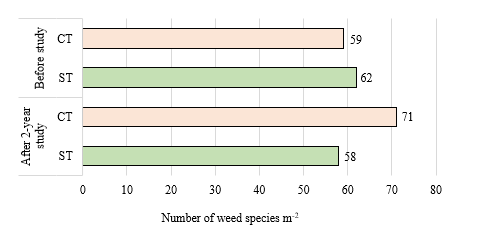Impact of Abuse on Mental Health: Short Review
Introduction
Debate on the differential impact of environmental and genetic factors in the origin and evolution of mental disorders is still too frequently raised as a dichotomy, both in research and in clinical practice. After decades dominated by reductionist approaches, there is a resurgence of interest in advancing in a greater integration of the impact of environmental factors on mental health. In this line, the influence of abuse and adverse experiences in the origin, course and severity of mental disorders is reborn in light of the current models of attachment, which provide a multidisciplinary, evolutionary and transversal perspective (Pearce, et al. 2017), and also the greater knowledge of how abuse and trauma condition neurobiological development (Teicher, et al. [1,2]).
Current Evidence
The overrepresentation of history of early adversity and trauma in people with mental disorders is well known (Aguado, et al. [3]), and those antecedents have been consolidated as a direct etiological mechanism in some disorders, being in others a factor that fundamentally affects the course and severity (Mayo, et al. [4]). Ongoing stress linked to early adversity and trauma in development produces persistent and pervasive effects on connections between the amygdala, prefrontal cortex, hypothalamus, and dopaminergic circuits, which are mediated, at least partially, by alterations in function of the hypothalamic-pituitary-adrenal axis (Smith, et al. [5,6]). The continued hyperactivation of this circuit, as a response to early adversity and trauma, alters susceptibility to stress, at structural and functional level, affecting especially frontodiencephalic areas, that play an important role in socioemotional regulation (Shonkoff [2]). Some transdiagnostic factors such as emotional regulation, or the threatening or depriving nature of the stressor, have been proposed as modulators of this relationship between abuse and the different forms of psychopathology (Bonet, et al. [5,7]). Thus, experiences of victimization are generally considered an important risk factor to develop psychopathology (Miller Graff, et al. [8]), impacting differently depending on the characteristics of the abuse and of the victims. In childhood, it has been related to a higher risk of suffering both externalizing disorders, such as conduct disorders (Kessler, et al. [9]), attention deficit hyperactivity disorder and oppositional defiant disorder, as well as internalizing disorders, such as anxiety disorders or depressives (Read [10]), at an earlier age of onset, with more severe symptoms, greater comorbidity and risk of suicide, and poorer response to treatment, at least, in some disorders such as depressive, anxiety, and substance use disorders (Teicher, et al. [1,11]).
Also in adulthood there is an increased risk of depression, anxiety, eating, personality, dissociative disorders and substance abuse, some of them in the early transition to adulthood and that tend to persist over time (Kessler, et al. [9]). Equally, noteworthy is the impact of early adversity and trauma on cognitive development (Cowell, et al. [12,13]) and neurodevelopmental disorders (Hoover [14]), worsening functionality and increasing the severity of symptoms (Peterson, et al. [15]). Its influence on people’s physical health is also well established scientifically, affecting areas such as sleep, physical growth and bone density, allergy/asthma, infectious diseases and greater vulnerability to organic pathologies such as cancer or autoimmune diseases (Pollack [16]). In schizophrenia spectrum disorders, it is associated with greater precocity, worse premorbid functioning, greater severity, more comorbidities, worse cognitive and intellectual functioning, and a less favorable response to treatment, consolidating the evidence that abuse and adversity are etiological factors of vulnerability, and not only precipitants, of these disorders, by producing structural changes in the brain and in neurotransmission, hyperreactivity of the hypothalamic-pituitary-adrenal axis, and cognitive dysfunctions (Read, et al. [17]). It is essential to deepen our knowledge about the mechanisms that underlie these associations to advance in the development of socio psychobiological models, such as the trauma to genic neurodevelopmental model of psychosis (Read [10]), or the cognitive model of attachment of voices (Berry, et al. [18]).
Conclusion
Understand that adversity in childhood, and especially abuse, is a risk factor that operates at the etiological level, should favor the development of a more precise nosology that favors better promotion, prevention and treatment of mental health. The main challenge is to consolidate, at a theoretical and practical level, the investigation of the epigenetic mechanisms that allow knowing how a psychological disorder is produced and evolves, especially in those disorders traditionally considered to have a mainly organic etiology, as occurs in psychosis. Studies in this area are limited by their methodology, mainly retrospective, so it is essential to include longitudinal studies that allow more generalizable conclusions. In addition, many are performed on clinical samples or government agency records, population samples being rare. Another important challenge would be to better define the specificity of the variables and generalize the segregated analyzes of some important factors such as sex or age. A truly integrative approach in mental health has to overcome the dichotomous perspective that opposes the preponderance of biological factors to environmental ones in the analysis of psychopathology, also transcending diagnostic categorizations and evolving towards a transdiagnostic perspective. All the accumulated knowledge that confirms the serious consequences of adversity, trauma and early stress on the health, both mental and physical, of the people who suffer from them, should guide health policies and interdisciplinary intervention models to promote better protection and good treatment in childhood.


No comments:
Post a Comment
Note: Only a member of this blog may post a comment.